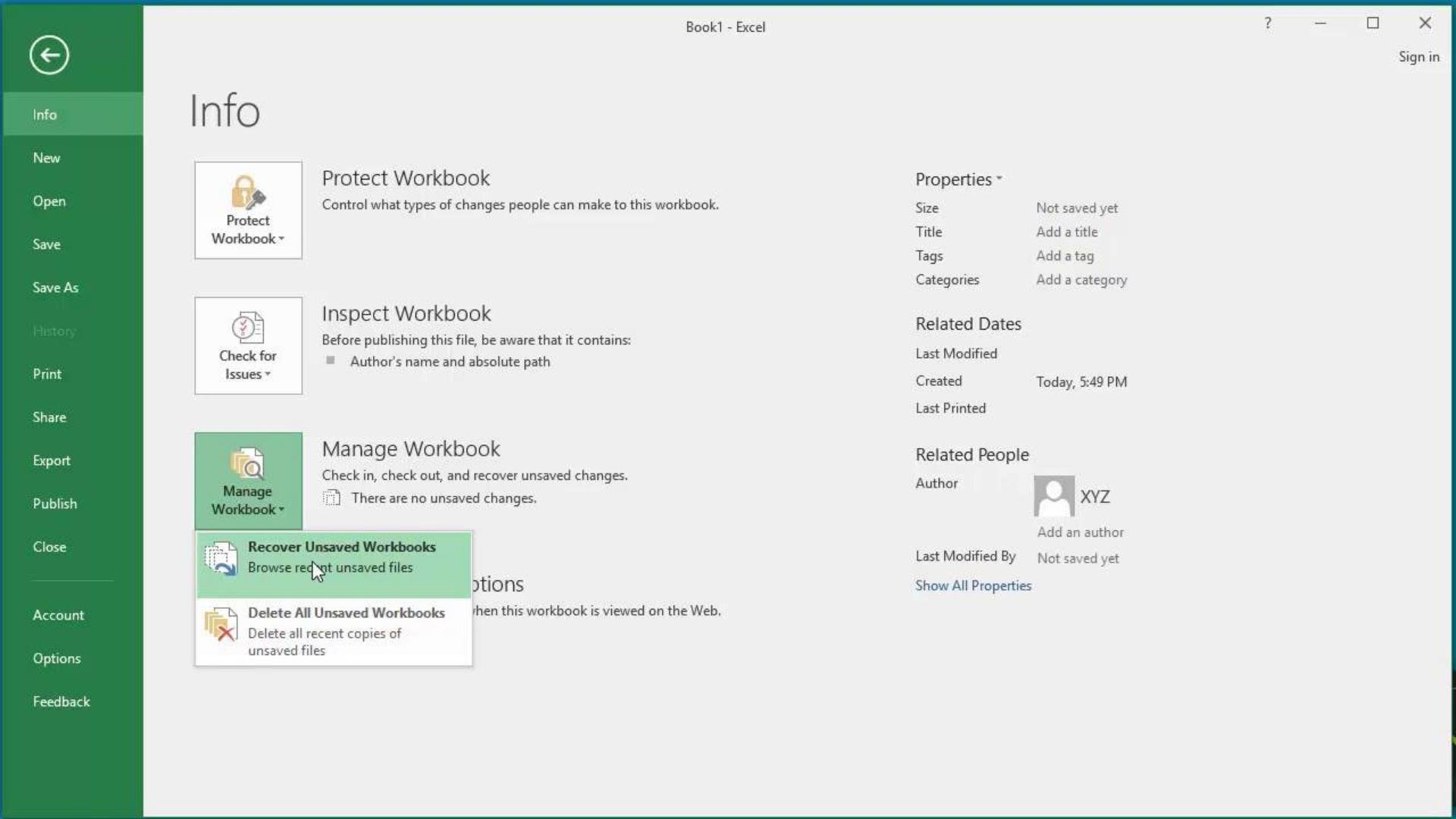It can be frustrating when you’re working on an important Excel document only to realize you forgot to hit Save before closing. When this happens, it’s important to know how to recover Excel files, or you risk needing to duplicate your work from scratch.
Of course, there are more problems than just human error. Computers can crash or shut down unexpectedly. If you’re working on a large and complex spreadsheet, Excel may even freeze.
Whether this happens to an Excel file you have previously saved or a brand-new document that has never been saved, you should be able to recover it. In this guide, you’ll find detailed instructions for recovering Excel files on Windows 10.
However, if an Excel file has been permanently deleted from your files and your Recycle Bin, you’ll likely need data recovery software to get it back. If that’s the case, check out this guide to the best data recovery software to help you retrieve your deleted Excel file.
Related: How to recover deleted files in Windows 10.
Step 1: Check your OneDrive version history
If you have been saving your Excel file to OneDrive, this is the first place to look. OneDrive automatically saves your files regularly and stores the version history for you. So, if you have accidentally overwritten or deleted data on your spreadsheet, you can easily access and restore previous versions of the file through OneDrive.
First, head to OneDrive on a desktop browser. Go to the folder where your file is saved. Right click on the file and hit Version History. Find the version that was saved before the overwrite and hit Restore. You can also download a previous version of the spreadsheet as an entirely separate file if needed.

Step 2: Check the file history
If you’re using a Windows device and have File History enabled in your settings, you can recover a lost Excel file directly through your desktop. This step is useful for when you have overwritten large amounts of data in your workbook and want to restore a previous version.
Open Windows Explorer and locate the file you want to restore. Right-click on the file and click the Restore Previous Versions option.
A new window will pop up with a list of all the stored previous versions of your file. Click the most recent version before the accidental overwrite and hit Restore. The file will automatically update to the previous version that you selected.

Step 3: Open Excel on your device
You can also recover lost workbooks and spreadsheets directly through the Excel program on your desktop. First, open Excel on your device and open up any existing workbook file.
In the panel on the left-hand side of Excel, click File and then Open. Under the Recent option, you’ll see a list of all the workbooks you recently worked on in the panel on the right-hand side—including any you forgot to save.
Scroll through the recent files until you locate the unsaved workbook you need to recover. The timestamp to the right of the document titles in the list will help you identify when the file was created or last worked on.
Once you locate your lost workbook, simply double-click to open it up—and make sure to save it first thing.

Step 4: Click on Recover Unsaved Workbooks
If you can’t see your workbook in the list of recent files in Excel, there is another option. When Excel is open, on the left-hand side, click File and then Info. Click the Manage Workbook icon, then click Recover Unsaved Workbooks.
This will pull up a file explorer with a list of files that you created but didn’t save. Once you locate your lost workbook in this window, simply double-click to reopen the file and begin working on it again.

Step 5: Save your recovered file
Once you have recovered your lost Excel file, it’s a good idea to immediately save the file to your desktop or to OneDrive to avoid this scenario happening again.
To save the file to your desktop, click File at the top of your Excel toolbar, then click and Save As before selecting This PC. When the file explorer opens up, use the left panel to select the location or folder where your file should be stored. Name your document in the File Name field before hitting Save.
Alternatively, you can save the file to OneDrive by selecting OneDrive instead of This PC. This will open up a window where you can enter your OneDrive login credentials before redirecting you back to Excel to choose a folder, name your document, and save it to OneDrive.

Summary
It can be a stressful moment when you realize that you’ve lost an important Excel file or a spreadsheet that you’ve spent a lot of time on. If you’re working between multiple workbooks, it’s also an easy mistake to overwrite lots of critical data in a spreadsheet.
Luckily, Microsoft has made it fairly straightforward to recover an Excel file, whether it has never been saved at all or you just need to find a previous version of a saved spreadsheet.
If you use Excel a lot and would like to find a way to use it easily on the go, check out this Excel for iPad review. Or, if you’re interested in a cloud storage solution that enables you to easily autosave and back up your Excel files, check out our full OneDrive for Business cloud storage review.
Original source: https://www.itproportal.com/features/how-to-recover-an-excel-file
